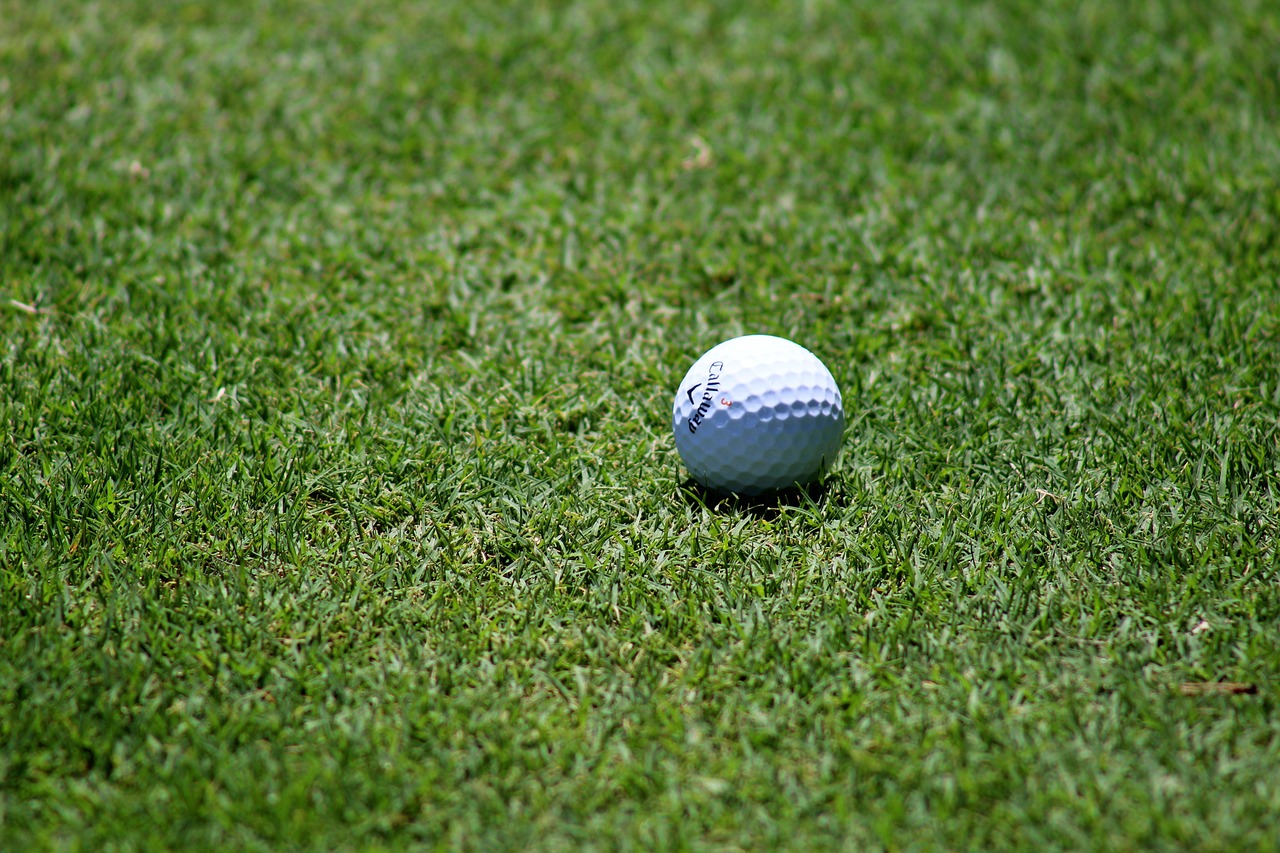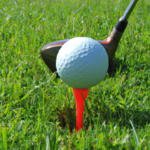
In the world of golf, improving your swing is crucial. And lucky for you, the world’s #1 golf coach has just revealed a game-changing drill that will do just that. This drill focuses on right arm positioning and backswing, keeping things simple and minimizing swing thoughts. Along with step-by-step advice, a practice plan, and a recommended training aid, this drill by Danny Maude aims to help you achieve a correct impact position with the driver, maintain wrist and elbow positions, and create consistency and power in your swing. So if you’re ready to take your golf game to the next level, this drill is a must-try.
The world’s #1 coach, Pete Cowen, shared this drill with Danny Maude, and those who have dedicated 6 minutes of practice a day have reported feeling like they’re cheating on the golf course. By focusing on the right arm, learning the proper starting position, moving it correctly in the backswing and downswing, and maintaining wrist angles and elbow positions, you can transform your golf game. With the goal of achieving a penetrating shot and improving ball striking, this drill offers a game-changing opportunity for golfers of all levels. So why not give it a try and see the difference it can make in your swing?
Phase 1: Improving the Backswing

Ensuring proper positioning of the trail arm at the top
In order to achieve a consistent and powerful swing, it is important to focus on the positioning of the trail arm at the top of the backswing. This positioning plays a crucial role in setting up the rest of the swing and can greatly impact your overall ball striking ability.
To ensure proper positioning of the trail arm, it is essential to maintain a relaxed grip and allow the club to naturally move into the correct positions. A common mistake is to tense up and try to control the club too much with the trail arm, leading to poor positioning and potential loss of control. Instead, focus on maintaining a light grip and allowing the club to move naturally into the correct position at the top of the backswing.
Preventing the right elbow from moving away in the backswing
Another key aspect of improving the backswing is preventing the right elbow from moving away from the body. This is a common mistake that can negatively affect your swing and result in inconsistent strikes.
To prevent the right elbow from moving away, it is important to focus on maintaining a connected and compact motion throughout the backswing. This can be achieved by keeping the right elbow close to the body and allowing the arms to move together as a unit.
One drill that can help improve this aspect of the backswing is the “Trail Arm Positioning” drill. To perform this drill, start by taking your setup position and then bring your trail arm across your chest, allowing the elbow to rest against your side. From there, make a smooth and controlled backswing while maintaining the position of the trail arm on your side. This drill will help train your body to keep the right elbow in check and promote a more connected and compact backswing motion.
Phase 2: Transitioning and Controlling the Downswing
Controlling the wrist angle in the right arm
In addition to improving the backswing, controlling the wrist angle in the right arm is essential for a successful downswing. The wrist angle plays a significant role in determining the trajectory and direction of the ball, as well as the overall power and distance of the shot.
To control the wrist angle in the right arm, it is important to maintain a relaxed and flexible grip throughout the swing. Avoid gripping the club too tightly, as this can restrict the natural movement of the wrists and lead to a loss of control. Instead, focus on maintaining a light grip that allows for natural wrist hinge and movement.
One drill that can help improve wrist angle control is the “Keeping the Right Elbow in Check” drill. To perform this drill, start by taking your setup position and then make a controlled backswing while focusing on keeping the right elbow in a consistent position. From there, transition into the downswing and focus on maintaining the wrist angle in the right arm as you swing through impact. This drill will help develop the muscle memory and coordination needed to control the wrist angle and promote a consistent downswing motion.
Maintaining the right elbow position
Along with controlling the wrist angle, maintaining the position of the right elbow throughout the downswing is crucial for a successful and consistent swing. The right elbow acts as a guide for the club and helps dictate the path and angle of the swing.
To maintain the right elbow position, it is important to focus on maintaining a connected and compact motion throughout the swing. This means keeping the right elbow close to the body and avoiding any excessive movement or extension.
One drill that can help improve right elbow positioning is the “Transitioning from Backswing to Downswing” drill. To perform this drill, start by taking your setup position and then make a smooth and controlled backswing while maintaining the position of the right elbow. From there, focus on transitioning into the downswing and keeping the right elbow in a consistent position throughout the motion. This drill will help train your body to maintain the proper right elbow position and promote a more consistent and powerful downswing.
Rotating the right forearm and maintaining pressure on the shaft
In addition to controlling the wrist angle and maintaining the right elbow position, rotating the right forearm and maintaining pressure on the shaft are crucial factors in achieving a consistent and powerful downswing. These actions help generate speed and power in the swing, as well as promote proper clubface control and ball striking.
To rotate the right forearm and maintain pressure on the shaft, it is important to focus on using the larger muscles of the body, such as the hips and core, to initiate the downswing. This will allow for a smoother and more controlled rotation of the right forearm, as well as promote proper sequencing and timing in the swing.
One drill that can help improve forearm rotation and shaft pressure is the “Controlling Wrist Angle and Right Elbow” drill. To perform this drill, start by taking your setup position and then make a controlled backswing while focusing on maintaining the wrist angle and right elbow position. From there, transition into the downswing by initiating the movement from the hips and core, allowing the right forearm to rotate naturally. As you swing through impact, focus on maintaining pressure on the shaft to promote a consistent and powerful release.
Drills for Improving Golf Swing
Drill 1: Trail Arm Positioning
The first drill for improving the golf swing is the “Trail Arm Positioning” drill. This drill focuses on ensuring proper positioning of the trail arm at the top of the backswing.
To perform this drill, start by taking your setup position and then bring your trail arm across your chest, allowing the elbow to rest against your side. From there, make a smooth and controlled backswing while maintaining the position of the trail arm on your side.
By practicing this drill, you will train your body to keep the right elbow in check and promote a more connected and compact backswing motion. This will ultimately lead to improved consistency and ball striking.
Drill 2: Keeping the Right Elbow in Check
The second drill for improving the golf swing focuses on keeping the right elbow in check throughout the swing.
To perform this drill, start by taking your setup position and then make a controlled backswing while focusing on keeping the right elbow in a consistent position. From there, transition into the downswing and focus on maintaining the position of the right elbow as you swing through impact.
By practicing this drill, you will develop the muscle memory and coordination needed to maintain the proper right elbow position and promote a consistent and powerful swing.
Drill 3: Transitioning from Backswing to Downswing
The third drill for improving the golf swing is the “Transitioning from Backswing to Downswing” drill. This drill focuses on the smooth and controlled transition from the backswing to the downswing.
To perform this drill, start by taking your setup position and then make a controlled backswing while maintaining the position of the right elbow. From there, focus on transitioning into the downswing by initiating the movement from the hips and core.
By practicing this drill, you will train your body to maintain the proper right elbow position and promote a more consistent and powerful downswing.

Drill 4: Controlling Wrist Angle and Right Elbow
The fourth drill for improving the golf swing is the “Controlling Wrist Angle and Right Elbow” drill. This drill focuses on controlling the wrist angle and maintaining the position of the right elbow throughout the swing.
To perform this drill, start by taking your setup position and then make a controlled backswing while focusing on maintaining the wrist angle and right elbow position. From there, transition into the downswing by initiating the movement from the hips and core. As you swing through impact, focus on maintaining pressure on the shaft and promoting a consistent and powerful release.
By practicing this drill, you will improve forearm rotation, maintain a proper wrist angle, and promote a more consistent and powerful swing.
Drill 5: Rotating the Right Forearm for Consistency
The fifth drill for improving the golf swing is the “Rotating the Right Forearm for Consistency” drill. This drill focuses on the rotation of the right forearm and maintaining pressure on the shaft for a consistent and powerful swing.
To perform this drill, start by taking your setup position and then make a controlled backswing while focusing on maintaining the wrist angle and right elbow position. From there, transition into the downswing by initiating the movement from the hips and core. As you swing through impact, focus on rotating the right forearm and maintaining pressure on the shaft.
By practicing this drill, you will improve forearm rotation, maintain a proper wrist angle, and promote a more consistent and powerful release.
Tips for Hitting the Driver Straight
Tip 1: Focus on a Smooth and Relaxed Grip
One of the key tips for hitting the driver straight is to focus on a smooth and relaxed grip. A tight or tense grip can restrict the natural movement of the club and lead to a loss of control and consistency.
When gripping the driver, aim for a light and relaxed hold, allowing the club to move freely during the swing. This will help promote a smooth and fluid motion, resulting in better control and straighter shots.
Tip 2: Maintain a Balanced Stance and Alignment
In addition to a smooth grip, maintaining a balanced stance and alignment is crucial for hitting the driver straight. A proper stance and alignment will help promote a more solid and controlled swing, leading to better accuracy and distance.
When addressing the ball, ensure that your feet are shoulder-width apart and your weight is evenly distributed between them. Align your body parallel to the target line, with your hips, shoulders, and feet all pointing in the same direction. This will help create a solid foundation for your swing and improve your chances of hitting the ball straight.

Tip 3: Utilize a Controlled Tempo
Controlling your tempo is another important tip for hitting the driver straight. A fast or rushed swing can lead to a loss of control and result in wayward shots.
Instead, focus on maintaining a smooth and controlled tempo throughout your swing. Take a moment to gather yourself and visualize your shot before starting your backswing. Then, make a smooth and fluid motion, allowing the club to naturally accelerate through the impact zone. This controlled tempo will help promote better accuracy and consistency with your driver.
Tip 4: Engage the Core for Stability
To hit the driver straight, it is important to engage your core muscles for stability and control. A strong and stable core will help maintain your balance throughout the swing and allow for a more controlled and powerful release.
Before starting your swing, take a moment to engage your core muscles by gently squeezing your abdominal muscles and maintaining a strong posture. This will help stabilize your body and provide a solid foundation for your swing. As you swing through the ball, focus on maintaining core engagement and stability, allowing for a smooth and controlled release.
Tip 5: Visualize a Straight Shot
Lastly, one of the most effective tips for hitting the driver straight is to visualize a straight shot before you even swing. Visualizing success can have a powerful impact on your performance and help improve your overall accuracy.
Before each shot, take a moment to visualize a straight and controlled shot. Imagine the ball flying straight towards the target and landing exactly where you want it to. This mental imagery will help focus your mind and improve your chances of hitting the ball straight.
Stopping Slicing: Effective Strategies
Strategy 1: Correct Grip and Alignment
One of the most effective strategies for stopping slicing is to ensure a correct grip and alignment. A faulty grip or misaligned stance can contribute to an open clubface at impact, leading to a slice.
To correct your grip, make sure your top hand is rotated slightly to the right (for right-handed golfers), allowing the face of the club to close naturally. Additionally, check your alignment by ensuring your feet, hips, and shoulders are all square to the target line.
By correcting your grip and alignment, you can help eliminate the factors that contribute to a slice and promote a more square clubface at impact.

Strategy 2: Square Clubface at Impact
Another important strategy for stopping slicing is to focus on achieving a square clubface at impact. A square clubface is essential for a straight shot and will help eliminate the side spin that causes a slice.
To achieve a square clubface at impact, focus on proper hand and wrist position throughout the swing. Keep your hands in front of the clubhead and avoid any flipping or rolling of the wrists at impact. Additionally, focus on maintaining a square clubface position as you swing through the ball.
By focusing on achieving a square clubface at impact, you can greatly reduce the chance of slicing and promote straighter shots.
Strategy 3: Avoid Over-the-Top Swing
One common cause of slicing is an over-the-top swing motion. This occurs when the club moves outside the target line on the downswing, leading to an open clubface at impact and a slice.
To avoid an over-the-top swing, focus on initiating the downswing with the lower body and allowing the club to naturally drop into the correct position. Avoid any excessive movement or casting of the club, as this can lead to an open clubface and a slice.
Additionally, consider incorporating drills and exercises that promote an inside-out swing path, such as the “Transitioning from Backswing to Downswing” drill mentioned earlier. This will help train your body to move in a more efficient and consistent manner, reducing the likelihood of slicing.
Strategy 4: Engage the Body for Correct Rotation
Another effective strategy for stopping slicing is to engage the body for correct rotation throughout the swing. Proper body rotation is essential for promoting a square clubface and eliminating the outside-in swing path that causes a slice.
To engage the body for correct rotation, focus on using the larger muscles of the hips and core to initiate the downswing. This will help promote a more natural and consistent rotation of the body, allowing for a more inside-out swing path and a square clubface at impact.
By focusing on engaging the body for correct rotation, you can help eliminate the slicing motion and promote straighter shots.
Strategy 5: Practice with Alignment Aids
Finally, incorporating alignment aids into your practice routine can greatly assist in stopping slicing. Alignment aids, such as alignment sticks or training aids, can provide visual feedback and help ensure proper alignment and swing path.
To practice with alignment aids, set up a pair of alignment sticks or use a training aid that promotes proper alignment and swing path. Use these aids during your practice sessions to reinforce correct positioning and eliminate the factors that contribute to slicing.
By practicing with alignment aids, you can train your body to consistently achieve the correct alignment and swing path, ultimately helping to eliminate the slice from your game.
Recommended Training Aid
One highly recommended training aid for improving golf swing is the Orange Whip. The Orange Whip is a versatile training aid that helps golfers of all skill levels develop a more consistent and powerful swing.
The Orange Whip is designed to promote proper sequencing and timing in the swing, as well as improve flexibility and balance. It features a weighted orange ball at the end of a flexible shaft, mimicking the motion and feel of a real golf swing.
By incorporating the Orange Whip into your practice routine, you can develop a more fluid and connected swing, leading to improved consistency and ball striking. The Orange Whip can also help promote better tempo and rhythm, as well as increase clubhead speed and distance.
Overall, the Orange Whip is a valuable training aid that can greatly assist in improving your golf swing and taking your game to the next level.
Practice Plan for Improvement
To help you improve your golf swing, here is a comprehensive four-week practice plan that focuses on different aspects of the swing:
Week 1: Focus on Backswing and Trail Arm Positioning
During this week, dedicate your practice sessions to improving your backswing and ensuring proper positioning of the trail arm. Focus on maintaining a connected and compact motion and avoid excessive movement or extension of the right elbow. Use drills such as the “Trail Arm Positioning” drill mentioned earlier to reinforce these concepts.
Week 2: Transitioning and Controlling the Downswing
In week 2, shift your focus to the downswing and practice controlling the wrist angle in the right arm while maintaining the right elbow position. Work on transitioning smoothly from the backswing to the downswing, using drills such as the “Transitioning from Backswing to Downswing” drill to develop proper sequencing and timing.
Week 3: Incorporating the Wrist Angle and Elbow Position
During week 3, incorporate the wrist angle and elbow position into your swing by focusing on maintaining a controlled release through impact. Practice drills such as the “Controlling Wrist Angle and Right Elbow” drill to reinforce these concepts and promote a consistent and powerful swing.
Week 4: Rotating the Right Forearm and Maintaining Shaft Pressure
In the final week of the practice plan, focus on rotating the right forearm and maintaining pressure on the shaft to improve consistency and ball striking. Use drills such as the “Rotating the Right Forearm for Consistency” drill to develop forearm rotation and promote a powerful release.
By following this four-week practice plan and dedicating time to each phase of improvement, you will gradually improve your golf swing and achieve better results on the course.
Benefits of the Game-Changing Drill
The game-changing drill for improving golf swing comes with a multitude of benefits that can greatly enhance your overall performance on the course. These benefits include:
Improved consistency and ball striking
By focusing on maintaining proper wrist and elbow positions throughout the swing, you will develop a more consistent and repeatable swing. This will lead to improved ball striking and more accurate shots.
Better control and shot shaping abilities
The game-changing drill helps promote proper sequencing and timing in the swing, allowing you to have better control over the clubface and shot trajectory. This increased control will enable you to shape your shots more effectively and tackle various course conditions with confidence.
Enhanced power and distance in the swing
Maintaining proper wrist and elbow positions throughout the swing allows for optimal energy transfer and clubhead speed, resulting in increased power and distance. The game-changing drill helps you tap into your full swing potential and unleash more power in your shots.
Reduced tendency for slices and hooks
By focusing on the correct wrist and elbow positions, you will greatly reduce the tendency for slices and hooks in your shots. This improvement in alignment and swing path will lead to straighter shots and eliminate the frustrating misses associated with slices and hooks.
Achievement of a correct impact position with the driver
One of the major benefits of the game-changing drill is the achievement of a correct impact position with the driver. By maintaining proper wrist and elbow positions, you will achieve a square clubface and solid impact, resulting in straighter and more powerful drives off the tee.
Incorporating the game-changing drill into your practice routine will bring these benefits into your game and help you take your golf swing to the next level.
The Importance of Practice and Dedication
While the game-changing drill provides a valuable tool for improving your golf swing, it is important to recognize the key role that consistent practice and dedication play in long-term improvement.
Improving your golf swing requires time and effort, as well as a willingness to undergo repetitive practice and make adjustments along the way. It is essential to commit to a regular practice schedule and focus on the specific areas of improvement outlined in the drill.
Consistent practice will help reinforce the proper wrist and elbow positions, as well as develop the muscle memory and coordination necessary for a more consistent and powerful swing. Dedication to the process will ensure that you stay motivated and committed to your goals, even when faced with challenges or setbacks.
By recognizing the importance of practice and dedication, you can approach your improvement journey with the right mindset and set yourself up for long-term success.
Conclusion
Achieving a consistent and powerful golf swing is a goal shared by many golfers. By emphasizing the importance of maintaining proper wrist and elbow positions throughout the swing, the game-changing drill presented in this article offers valuable insights and techniques for improvement.
By following the outlined phases, incorporating the recommended drills and tips, and dedicating yourself to consistent practice, you can greatly enhance your golf swing and achieve better results on the course.
Remember, improvement takes time and effort, but with the right mindset and commitment, you can unlock the full potential of your golf swing and enjoy the game to its fullest. So, grab your clubs, embrace the game-changing drill, and start your journey towards a more consistent and powerful swing today.





